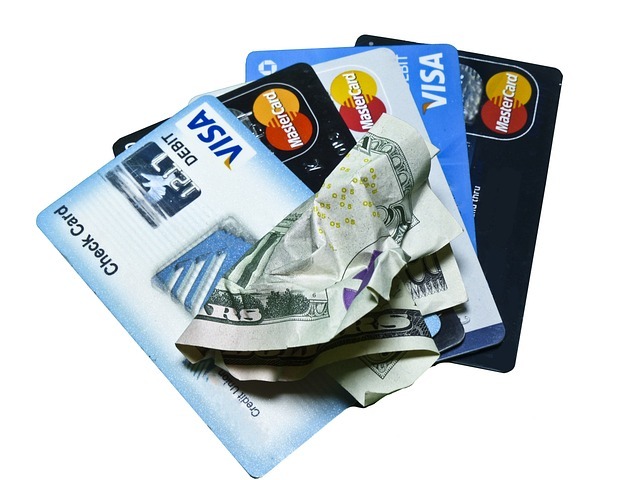Credit card debt can feel overwhelming, but there’s a solution that might help: credit card debt consolidation. It’s a method where you combine multiple credit card balances into a single loan or balance transfer card. This way, you’re left with just one monthly payment instead of juggling several.
One of the main benefits of consolidating credit card debt is simplifying your finances. With only one payment to make each month, it’s easier to manage and reduce the chance of missing payments. Plus, there’s often the possibility of securing a lower interest rate, which can save you money in the long run.
However, debt consolidation isn’t without its risks. It’s important to recognize that consolidating debt doesn’t erase the debt itself. You’re simply moving it around. If you don’t address underlying spending habits, you might end up back in the same situation or even worse.
So, when is debt consolidation a good option? Typically, if you have multiple high-interest credit card debts and you’re struggling to keep track of them, consolidation can offer a clearer path. It’s also useful if you can qualify for lower interest rates, either through a personal loan or a balance transfer card with an introductory 0% APR period. Always consider your financial situation and future before jumping in with both feet.
This post contains affiliate links. If you make a purchase through these links, I may earn a commission at no extra cost to you.
Contents
- 1 Assessing Your Financial Situation
- 2 Is Consolidation Right For You?
- 3 Exploring Different Consolidation Methods
- 4 Comparison Table of Debt Consolidation Options
- 5 Travis’s $8K Turnaround: A Real-Life Debt Consolidation Win
- 6 Creating a Step-by-Step Plan
- 7 Maintaining Financial Health Post-Consolidation
Assessing Your Financial Situation
Before consolidating your credit card debt, it’s crucial to take a good hard look at your financial health. You need to know what you’re dealing with to make informed decisions.
Start by evaluating your current debt and the interest rates attached to each credit card. List out all your debts, from the ones with the highest interest rates to the lowest. This helps in understanding the full scope of what you owe.
Next, examine your income and expenses. Track every dollar coming in and going out for at least a month. This can be eye-opening and is essential for creating a realistic budget. Understanding your cash flow will help determine how much you can realistically put toward paying off your debt each month.
Your credit score plays a big role in the types of consolidation options available to you. Check your credit report for any errors that might be dragging down your score. Knowing your credit score will help you anticipate the interest rates you might qualify for.
Is Consolidation Right For You?
This quick self-assessment helps determine if you’re a good candidate for debt consolidation—or if you should focus on foundational financial steps first. Answer honestly and click “See My Results.”
Lastly, identify your financial goals. Are you looking to get out of debt as quickly as possible, or are you more focused on lowering your monthly payments? Your goals will influence the type of consolidation method you choose and how aggressively you pursue paying off your debt.
Exploring Different Consolidation Methods
Once you have a clear understanding of your financial situation, it’s time to explore the various ways you can consolidate your credit card debt. Each method has its advantages and drawbacks, and the right choice depends on your specific circumstances.
Balance transfer credit cards are one option. These cards often offer introductory 0% APR periods, sometimes lasting up to 18 months. This means you can move your high-interest debt onto the new card and focus on paying it off without interest for a while. However, be mindful of balance transfer fees, and make sure you can pay off the balance before the introductory period ends, as the interest rate can spike afterward.
Personal loans are another widely-used method. By taking out a loan with a fixed interest rate, you can pay off your credit card debt in one fell swoop. Personal loans typically offer lower interest rates compared to credit cards, especially if you have a good credit score. Just be sure to shop around for the best rates and terms.
Home equity loans and lines of credit give you a way to tap into your home’s equity to pay off your credit card debt. These loans generally come with lower interest rates because they’re secured by your home. While this sounds appealing, it’s important to remember that your home is on the line if you fail to make payments.
Debt management plans, often offered by credit counseling agencies, consolidate your debt into one monthly payment, negotiated at lower interest rates. These plans require closing your credit card accounts and committing to a structured payment plan, generally lasting three to five years. It’s a disciplined approach but can significantly simplify debt repayment.
Comparison Table of Debt Consolidation Options
| Method | Interest Rates | Fees & Penalties | Minimum Credit Score | Best Use Case | Pros | Cons |
|---|---|---|---|---|---|---|
| Balance Transfer Credit Cards |
Introductory: 0% APR for 12-21 months Ongoing: 15%-28% APR |
3%-5% transfer fee Late fees may void promo rate |
670+ Good to Excellent You’ll need a decent score for better 0% promo offers. | Paying off mid-range credit card balances quickly |
– Potentially no interest for up to 21 months – Fast approval process – Helps simplify multiple balances |
– High ongoing APR – Must pay off before promo ends – Transfer fees add up |
| Debt Consolidation Loans | Fixed rates: 7%-36% APR | Origination fees (1%-8%) Late payment penalties |
620+ Fair to Excellent Lower scores may result in higher rates or denial. | Combining multiple high-interest debts into one payment |
– Predictable, fixed payments – Could lower overall interest – May improve credit mix |
– Requires decent credit for best rates – Possible collateral requirements – Longer terms may mean more total interest |
| Home Equity Loans or HELOCs |
HE Loans: 5%-9% APR HELOCs (Variable): ~6%-10% APR |
Closing costs (2%-5% of amount) Risk of foreclosure |
680+ Good to Excellent Strong credit and sufficient equity are key for approval. | Consolidating large debt amounts using home equity |
– Typically lower rates than unsecured loans – Possible tax deductions on interest – Large borrowing potential |
– Your home is collateral – Longer approval process – Variable rates can rise (HELOC) |
| Debt Management Plans |
Negotiated interest rates on credit cards Monthly program fees apply |
$25-$75 monthly fee Penalties if plan terms not met |
No specific credit score required Program acceptance depends more on income and debts than score. | Working with counselors to lower interest on unsecured debts |
– Professional guidance – May reduce interest rates – Single monthly payment |
– Program fees can be significant – Requires strict adherence – May temporarily impact credit |
Each of these methods has its pros and cons. Understanding them will help you make an informed decision that aligns with your financial goals and capabilities.
Travis’s $8K Turnaround: A Real-Life Debt Consolidation Win
Travis, a 27-year-old from Florida, found himself juggling $8,000 in credit card debt across three cards—all charging interest rates over 20%. Feeling overwhelmed, he decided to consolidate his balances with a personal loan at 9% APR, drastically reducing his overall interest costs. Travis realized he’d save more than $1,200 by switching to the loan, which provided a single, manageable monthly payment. He locked away his old credit cards to avoid racking up new expenses and set up automatic payments to stay on track. Within two years, he eliminated the debt completely—crediting his success to lower interest, a disciplined budget, and a shift in spending habits.
Creating a Step-by-Step Plan
Having chosen the most suitable consolidation method based on your financial assessment, the next step is to create a detailed action plan. This ensures that you maintain control over the process and steadily work towards your debt-free goal.
Begin by applying for the chosen debt consolidation product. For a balance transfer credit card, ensure you understand the terms and conditions thoroughly. If you’re opting for a personal loan, compare interest rates from different lenders to secure the best deal. Thorough research prevents unexpected surprises later on.
After securing the consolidation product, promptly use the funds to pay off your credit card balances. This step is crucial in removing the high-interest burdens from multiple credit cards and consolidating them into one manageable payment.
Next, establish a clear repayment schedule. The goal here is consistency. Set up automatic payments if possible to avoid missing any deadlines. This step supports building a good payment history, which is beneficial for your credit score.
Monitor your progress regularly. Keep an eye on your balances to ensure they are decreasing as planned. Adjust your budget if needed to allocate more funds toward debt repayment, speeding up the process.
By following these steps, you can move towards a future where debt doesn’t overwhelm your financial health.
Maintaining Financial Health Post-Consolidation
After successfully consolidating your credit card debt, the journey isn’t over. The next phase involves maintaining your financial health to avoid falling back into debt.
Building a budget is essential. This involves tracking your income and expenses to ensure that you’re living within your means. Allocate funds for savings and emergencies, which can provide a cushion in case of unexpected expenses.
Utilize tools and resources to keep track of your spending. Budgeting apps can simplify this process, helping you stay on top of your financial situation.
Improving your credit score post-consolidation should be a priority. Make timely payments on your new consolidated debt, which will reflect positively on your credit report. Avoid new debt, as it can quickly undo all your hard work.
Seeking professional financial advice can be beneficial. Financial advisors can offer tailored advice to help you stay on track and achieve your long-term goals. They can also provide strategies to rebuild your credit and secure your financial future.
Staying disciplined is key. Continue educating yourself about financial management and make conscious spending. Avoid the temptation to accrue new debt by limiting the use of credit cards until you’ve built stronger financial habits.


Great guide! This step-by-step breakdown on consolidating credit card debt makes a complex process feel manageable. The practical tips on assessing debt and choosing the right consolidation method are super helpful. It’s a valuable read for anyone looking to take control of their finances and reduce debt stress—thanks for sharing this!
Thank you, Randi! I’m pleased to hear that the guide was useful for you—it aims to make the process feel manageable! Here’s a quick tip: when consolidating, establish a practical monthly budget to prevent falling back on credit. Minor changes can significantly help you stay focused. I appreciate your feedback!